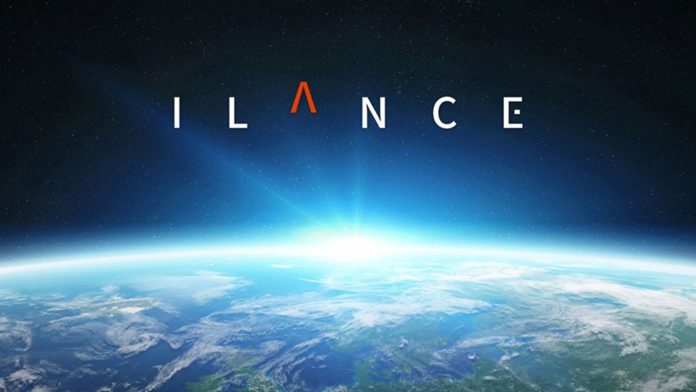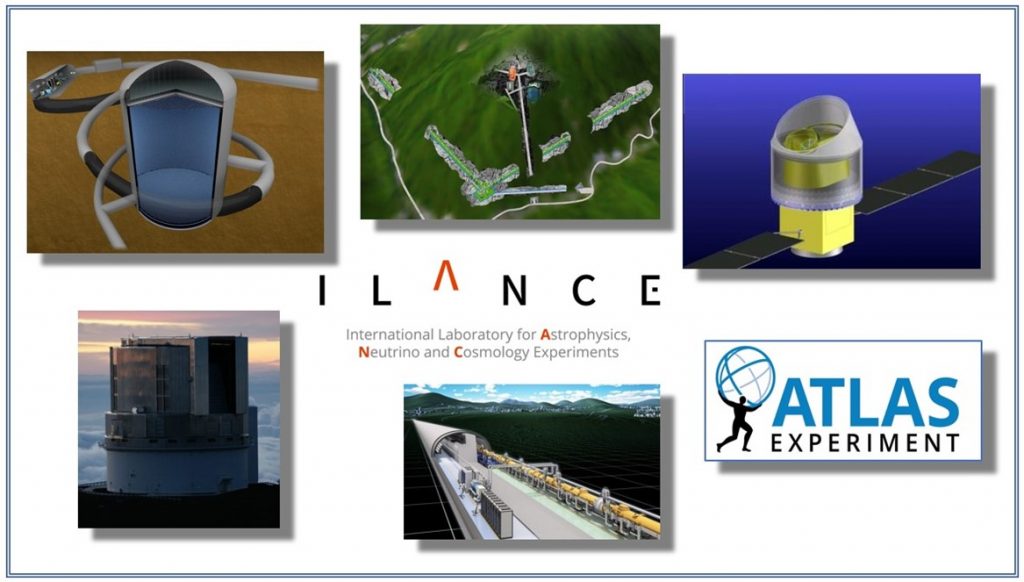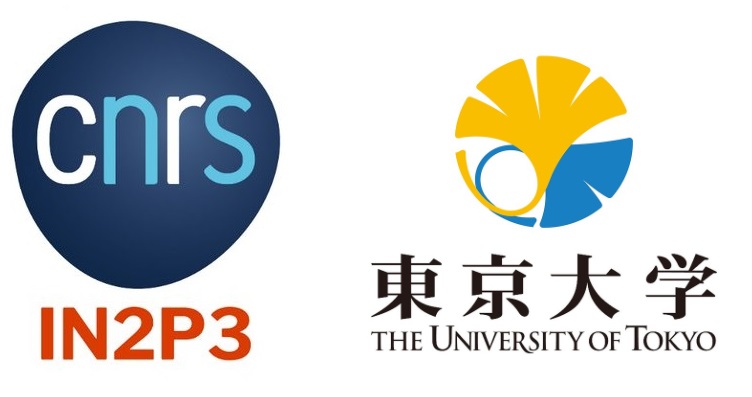The National Center for Scientific Research (CNRS) and the University of Tokyo collaborate in joint international research laboratory for physics at the smallest and largest scales of our universe.
Our scientific world faces significant challenges, and the field of physics is no exception. In addition to actively collaborating on international scientific projects to answer fundamental questions about our universe, our eyes must be turned to the future by taking advantage of international partnerships at all levels and encouraging new collaborations that generate new ideas for the next decade, and beyond, for the next generation of physicists. The National Center for Scientific Research (CNRS), the main French national funding and research agency, very recently signed a cooperation agreement with the University of Tokyo (UTokyo) for the creation of an international physics research laboratory. This laboratory, called the “International Laboratory for Astrophysics, Neutrino and Cosmology Experiments”, or simply “ILANCE”, is located on the Kashiwa campus of UTokyo. The creation of ILANCE will coincide perfectly with the start of new research programmes in Japan, France and around the world, with a very great potential for first-rate discoveries. During the last decades, the teams of this new laboratory have been actively involved in very successful international programmes. Strengthening existing collaborations over a long period for fundamental research in physics at the smallest and largest scales of our universe and developing new common research areas is the objective of this programme.
International research laboratories (IRL) as an essential tool for optimising international scientific cooperation in high-energy physics.
Despite the international situation, it is imperative to continue to strengthen and develop international and intercontinental cooperation between scientists from different institutes or universities. Due to the global spread of COVID-19 and the associated travel restrictions, the temptation for each country to turn in on itself is growing. This attitude is perhaps understandable, but international collaborations today are at the heart of higher education and scientific research systems. International collaboration enables the sharing of knowledge, skills and techniques, the exchange of different points of view, and the cross-fertilisation of ideas, while expanding university networks and improving the visibility of research work. Academic partnerships between different countries offer a multitude of possibilities to researchers, engineers, and students. Through creating an environment in which they collaborate with the whole world, research teams have every chance to raise the level of their research. In fact, we have no choice. In order not to decline, academic research must be world-class. In addition to research opportunities, institutions should offer study and exchange programmes abroad for their master’s and doctoral students.
At the same time, it is also important to reduce international traffic for people, especially air transport, for reasons related to global warming with carbon dioxide emissions or to the possibility of virus circulation as recently demonstrated by the COVID-19 pandemic. Some changes in the behaviour of air passengers will be necessary in the future. This calls on physicists and engineers who are members of major international collaborations to reduce their short stays associated with many trips back and forth between the countries involved in their projects. Certainly, many virtual tools such as those used for videoconferencing have been developed and are already used intensively by these scientists, but direct exchanges with a presence on the experimental sites will remain necessary for the years to come. This is true for experienced physicists and even more for doctoral students and interns of these collaborations. More generally, international student exchanges have become increasingly popular in recent decades. The world is becoming more and more multicultural and interconnected, and it is essential for the younger generations to be able to communicate with people of all cultures in an international environment.
This situation calls for the development of new tools to optimise international scientific cooperation. To strengthen its presence in the world, the CNRS has developed a range of tools aimed at giving institutional visibility to international cooperation. The most representative tool of the CNRS’s efforts is its IRLs, which correspond to international research establishments within which research activities are carried out jointly around shared scientific topics. They allow the significant and lasting presence of scientists from several French and foreign research institutes in a well-defined place. Real laboratories located on-site at international universities, the IRLs bring together researchers, students, post-docs, engineers, and technicians from CNRS and foreign partner institutions. ILANCE is the seventh international research laboratory of the CNRS in Japan. It is the third with UTokyo, and the first in the field of physics at the smallest and largest scales of our universe.
Based on the Kashiwa campus in the northeast of the city of Tokyo, the ILANCE laboratory permanently hosts scientists from many IN2P3 laboratories, one of the ten CNRS institutes, and from four departments of the UTokyo namely, ICRR, Kavli IPMU, ICEPP and the School of Science. The laboratory is made up of French physicists for long-term stays and Japanese physicists. Individual research grants are awarded for postdoctoral stays or doctoral thesis. The laboratory will also aim to welcome and support French physicists for temporary stays in Japan. The new ILANCE laboratory is also an exceptional opportunity to find new funding in France, Japan and from the European Community for innovative research work allowing researchers from both countries to form new teams around a common project.
Scientific Programme
The French philosopher, mathematician and scientist Blaise Pascal wondered in the 17th century about the special place of human beings in observing the Universe that surrounds them. He ultimately noticed that the human being is placed halfway between the infinitely large and the infinitely small of our universe and wondered why. This metaphysical question on the “two infinities” is still relevant today. Research in physics regarding these two infinities is at the heart of ILANCE’s scientific programme. It includes neutrino physics, particle physics, astrophysics, astroparticle physics, and cosmology. In search of new discoveries, these fields explore what the Universe is made of, or was made of, and what its basic laws are on the smallest and largest scales. The history of our universe has been dominated by the intimate relationship between these domains since its earliest moments just under 15 billion years ago. Over the next decade, experiences from these different fields have the potential to revolutionise our understanding of the formation and evolution of the Universe with participation from ILANCE teams. The international laboratory will also aim to promote interdisciplinary projects, in synergy between researchers in its different fields.
ILANCE has defined five priority areas for its scientific programme which essentially brings together the most representative research subjects of the physics of the two infinities. They were also chosen because they already bring together teams from IN2P3 and UTokyo. Projects other than those mentioned here could gradually be added to the objectives of ILANCE.
Gravitational Waves
Gravitational wave astronomy began with the first and spectacular detection by LIGO in September 2015, followed by LIGO-VIRGO detections made between 2017 and 2020. So far, scientists have detected gravitational waves consistently coming from extreme sources such as the merging of black holes and the fusion of neutron stars. The newly operational KAGRA experiment, which also searches for ripples in space-time, is located in a mine deep underneath a mountain in the northern part of Gifu Prefecture in Japan. It first operated for several weeks in 2020. KAGRA has increased the number of gravitational wave observatories from three to four, which will allow scientists to better triangulate the source of the ripples in space-time. This gravitational wave network will continue to expand with the upcoming participation of LIGO India. For the coming runs, the intercalibration of the KAGRA-VIRGO-VIRGO detectors will be of utmost importance. The long experience acquired by the IN2P3 teams with the operation of VIRGO and Advanced VIRGO will benefit KAGRA. Collaborative topics within ILANCE include hardware development, software exchange, and data analysis expertise. It includes elements such as mirror and coating technologies, interferometry, electronics, cryogenics, detector control and characterisation, data analysis for research for gravitational waves and characterisation and monitoring of data quality. In addition, there are current collaborations for the future in the area of gravitational wave research. These activities will enable ILANCE to play an important role in this innovative and very rapidly developing field of gravitational wave astronomy, alone, or in combination with other probes in the context of the multi-messenger.
Neutrino, Particle and Cosmic Messenger
The discovery of neutrino oscillations by the Super-Kamiokande (Super-K) experiment in 1998 revealed the existence of tiny masses for neutrinos as well as lepton flavor mixing. Over the past 20 years, the framework of neutrino oscillations has been studied very intensively with the arrival of a new generation of experiments such as T2K in Japan and NOvA in the USA. CP violation in the lepton sector could be the source of matter-antimatter asymmetry in the Universe, and is therefore one of the main scientific goals of neutrino experiments for the next decade. Neutrinos as cosmic messengers are also of great interest for probing the evolution of the Universe and its most violent phenomena. The observation of neutrinos in 1987 of the supernova SN1987A by the Kamiokande experiment proved that the base scenario of the supernova explosion was correct. Another approach is to search for the diffuse background of supernova neutrinos produced by the supernovae that has occurred since the beginning of the Universe. This new field concerning the production and the evolution of stars has a strong potential of discovery in the near future. ILANCE is expected to play an important role in the next decade in particular for the construction of Hyper-Kamiokande (Hyper-K) whose first data collection period is expected before the summer of 2027. This will also be the case for the exploitation of the new Super-K detector doped with gadolinium to detect these relic supernova neutrinos and the commissioning of upgrades for the new T2K-II measurement campaign. Hyper-K is the next generation of large-scale Cherenkov water detectors. It is expected to be an order of magnitude larger than its predecessor Super-K with the optimal design consisting of two half-megaton tanks fitted with ultra-high sensitivity photo sensors. During the construction phase of Hyper-K, which began recently, the presence of physicists and engineers from IN2P3 in Kamioka will be necessary. The UTokyo and IN2P3 teams are already actively collaborating on the design and hardware testing of future Hyper-K detector components. This collaboration will gradually intensify within ILANCE until the end of the construction of the detector.
The Primordial Universe
The study of the fluctuations of the Cosmic Microwave Background (CMB), initiated by the COBE and WMAP measurements have reached a mature state with the ESA Planck mission which established the standard 6 parameters cosmological model consistent with the theory of the very early Universe called cosmic inflation. This phase of expansion would have occurred very early at the end of the Planck era or shortly after. Advances in instrumentation will probably make it possible to study gravitational waves emitted by this inflation by measuring the B-mode polarisation of the CMB fossil radiation. If this polarisation can be detected, it will provide a strong clue to prove the theory of inflation, it will allow this model to be refined and it will open up new perspectives in the field of cosmology. LiteBIRD will be the fourth generation of satellites dedicated to measuring the emission of fossil radiation. To equip the two instruments of the Lite BIRD space mission project, cryogenics at very low temperatures, in this case 100 millikelvin, will be used to cool detectors and allow the observation of extremely weak signals. Through the development of instrumental components and testing facilities at Kavli IPMU, UTokyo is a lead partner on the space mission to be launched late 2020s, that would complement the ground efforts. LiteBIRD is an international project in which the ILANCE teams are strongly involved. UTokyo also has a leading role in the building and integration of several platforms for the Simons Observatory, which is a keystone of IN2P3 involvement in the ultimate ground experiment CMB-S4. The combination of the ground and space measurements will be a powerful approach to ensure a reliable detection and robust characterisation of the primordial gravitational wave signal.
The Dark Universe
The Universe remains a mystery because we do not yet understand the nature of its most important constituents namely dark matter and dark energy. Even though the dark matter hypothesis was put forward in the 1930s, it was not until the beginning of this century that it was discovered that the current expansion of the Universe was accelerating. This fact can only be explained by the introduction of a dominant component in models, dark energy, in the Universe or by a modification of the theory of gravity on cosmological scales. A strong experimental programme has been built in recent years to study the nature of these phenomena using different and complementary probes within collaborations including Japanese and French teams. For example, they collaborated on the design of a two-season ultra-deep supernova study. The measurements of Images and Redshifts is a project based on complementary observations made with the Hyper Suprime-Cam (HSC) and soon the Prime Focus Spectrograph (PFS), both on the SUBARU telescope. The PFS will be used to perform a massive spectroscopic study starting around 2023, with a focus on cosmology to explore the nature of the dark sector of the Universe. The HSC operational since 2014 and the PFS will allow simultaneous spectroscopic observation of approximately 2,400 objects over the wide range of wavelengths. In addition, the estimation and characterisation of the gravitational lens from CMB observations is another very powerful probe for exploring the dark sector, which will be one of the major scientific objectives of the Simons Observatory to which the ILANCE teams will contribute.
Particle Physics and Detectors
Since its discovery in 2012, the Higgs boson has become a prominent tool to seek manifestations of new physics at high-energy physics. The ATLAS experiment at CERN tests the predictions of the Standard Model, which encapsulates our current understanding of what the building blocks of matter are and how they interact. These studies can lead to ground-breaking discoveries. The years ahead will be exciting as ATLAS takes experimental physics into unexplored territories. ILANCE will strength the partnership between IN2P3 and the UTokyo for the expected data-taking campaigns at CERN starting in March 2022 and for the phase II upgrades to prepare HL-LHC. Regarding the next-generation particle colliders to complement and advance beyond the physics of the Large Hadron Collider at CERN, the construction of an electron-positron collider acting as a Higgs factory has become one of the top priorities worldwide. Based on a long-standing global effort, the International Linear Collider (ILC) envisaged to be built in Japan, is a close to construction ready project, currently examined to evaluate its feasibility as an international infrastructure. The design of the machine and of associated detectors as well as the physics potential assessment of the project, have benefited from an international task force within which IN2P3 and UTokyo research teams have worked in strong collaboration, leading to prominent results in each of the domains. Major technical issues were addressed, where several orders of magnitude had to be conquered over the state of the art.
References
https://www.u-tokyo.ac.jp/focus/en/articles/z0208_00106.html
https://www.cnrs.fr/fr/cnrsinfo/au-japon-un-nouveau-laboratoire-pour-etudier-les-deux-infinis










